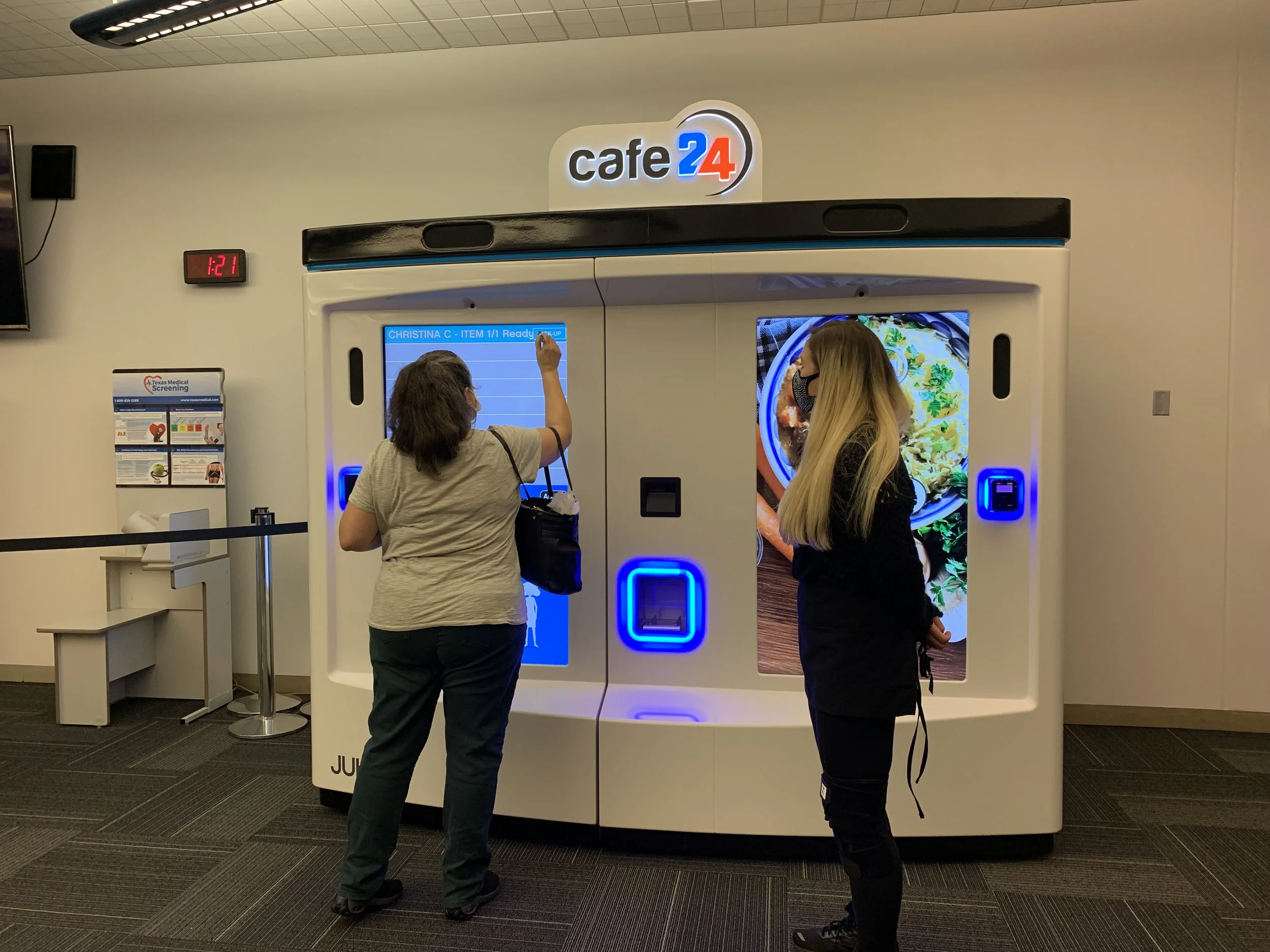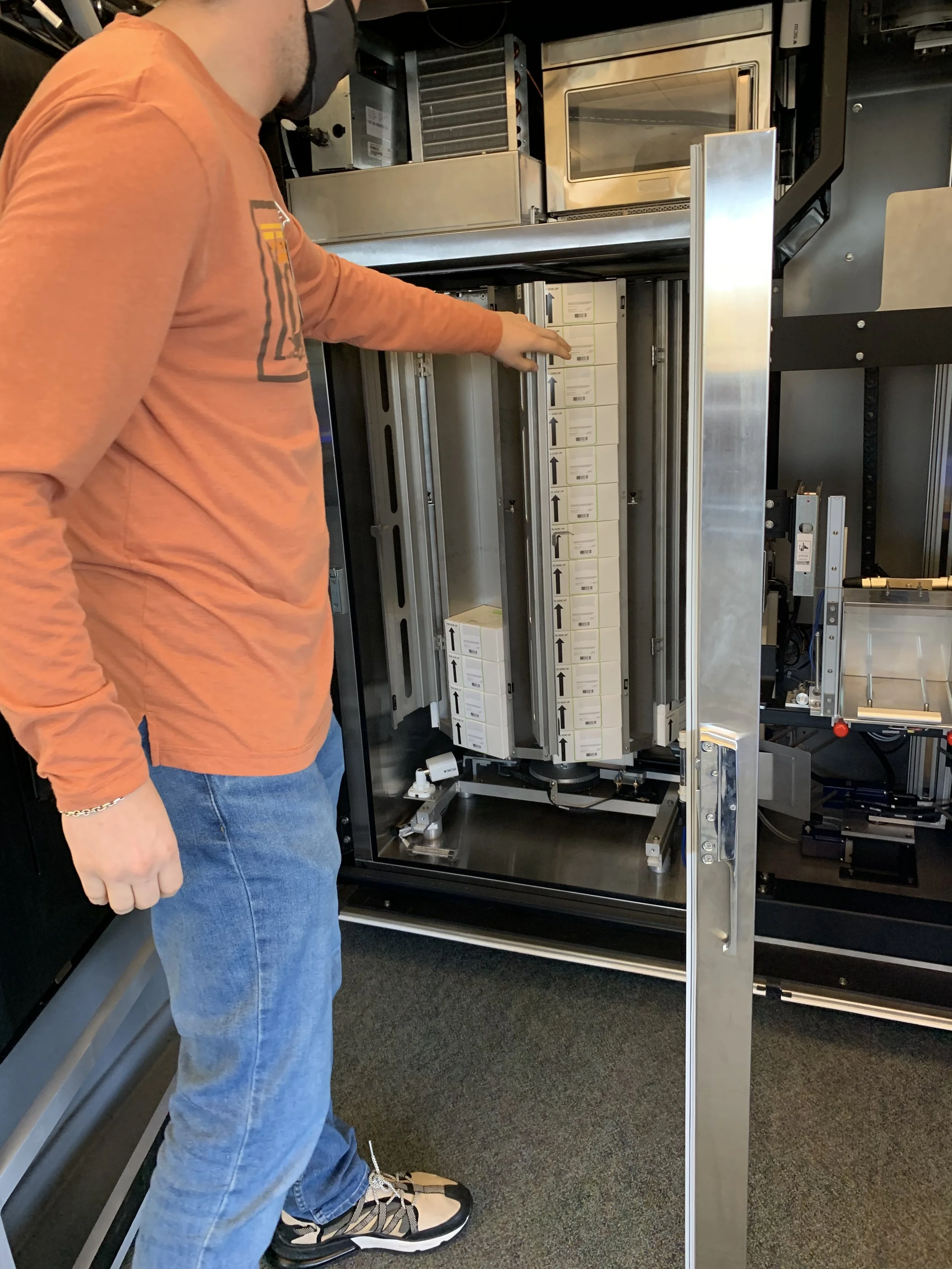Getting to Testing the Vending Machine
After the Coding Started
As described in the Hot Food Vending Machine case study, both the mobile app and the HMI (Human Machine Interface) had been designed in three months by our team of two UX Designers. I continued on with the project, providing feedback and guidance to the remote developer team on both platforms.
Our setting was in the cafeteria of a local manufacturing facility. The food partner has an ongoing relationship with the company, with an on-site chef and his staff preparing meals for the daytime workers. The host company had been looking for a way to provide better not meal options for the second and third shift workers. The current vending area contains prepackaged foods, but nothing fresh, or comperable to what was available to daytime workers. It was decided that the in-house chef and team would not only prepare the foods to be tested, they would also do the restocking and enter data onto the Dashboard.
More than your standard Usability Test!
However, the Jukka (Cafe24) project isn’t solely a digital product. It’s a hot food vending machine! Therefore, our testing would target several areas; machine performance, inventory management and restocking, food, and X/UI design.
DEI, the machine part of the team, had an ‘alpha’ machine in their lab that they tested operations issues with. The UX/UI had not been user-tested. This ‘beta’ machine field test would provide the first opportunity to observe customers interacting with all of these elements, as well as, testing how the foodservice staff managed changing menu items and the restocking procedures.
Chef and team restocking the machine
To perform the testing, the “food partner” determined that there should be Ambassadors to facilitate the introduction of the machine to the test participants. Of course, this is not the unbiased testing we typically espouse, however, it is known in evaluation circles as ‘developmental testing’. We would use the Ambassadors to casually engage with the customers, inquiring as to typical dining habits, ease of interaction with the machine, etc.
Ambassador observing a customer getting their meal
DEI staff were to be on hand during ‘operating hours’ to address and machine issues that might arise.
We observed that the Chef and kitchen staff were having some challenges with the Dashboard, so I created a Users’ Guide to facilitate the speed of the restock, as well as, to ensure proper meal counts and placement. In a future iteration, the Dashboard will be redesigned and a tablet computer will be provided to allow re-stockers to have the Dashboard at the mahine, as well as the desktop version back in their office.








